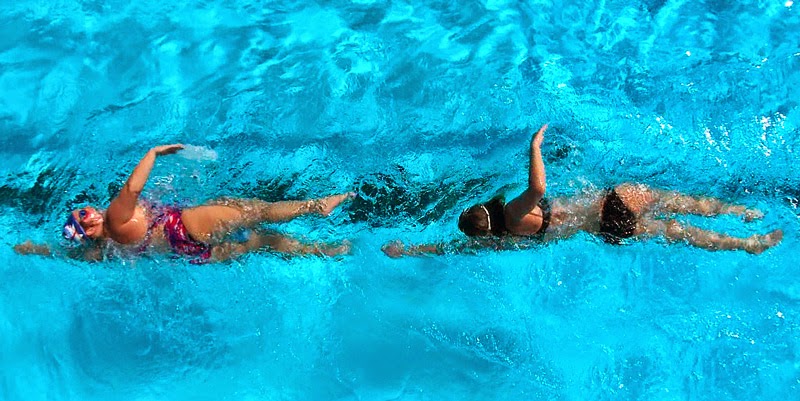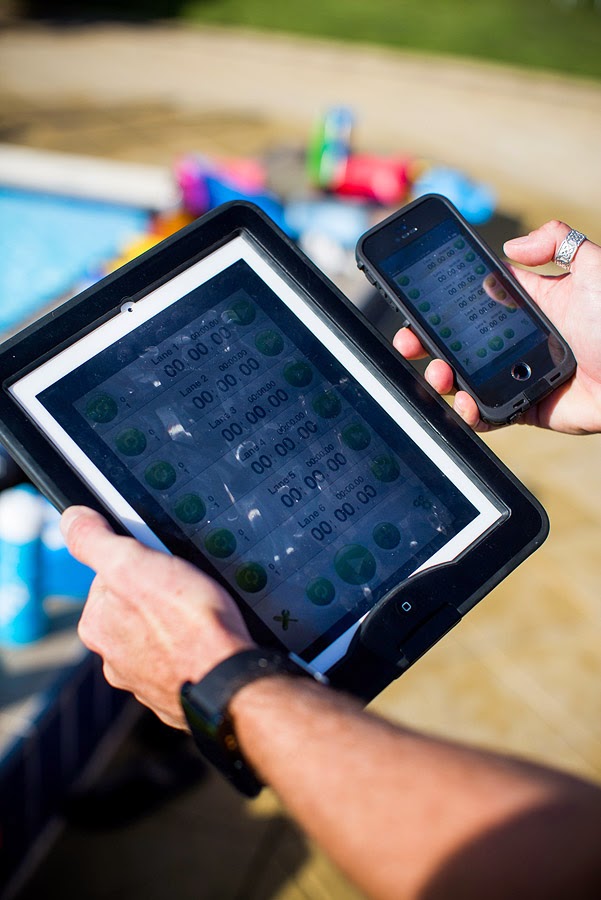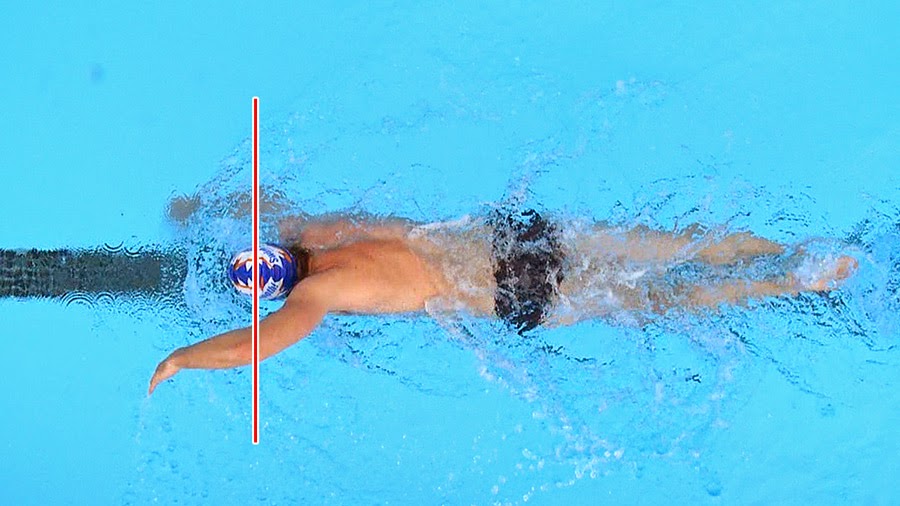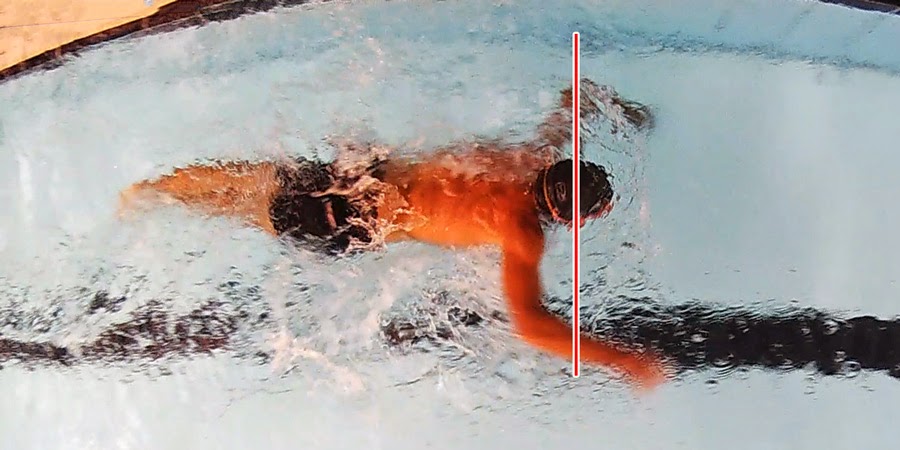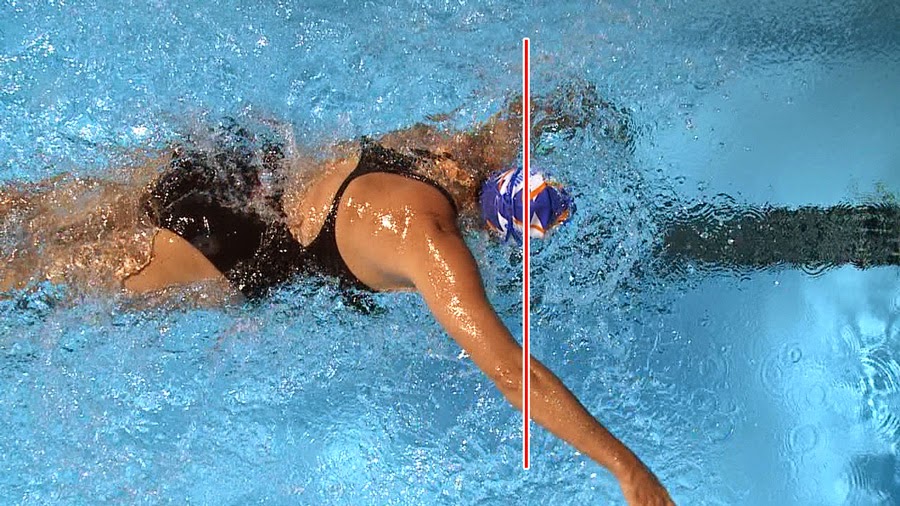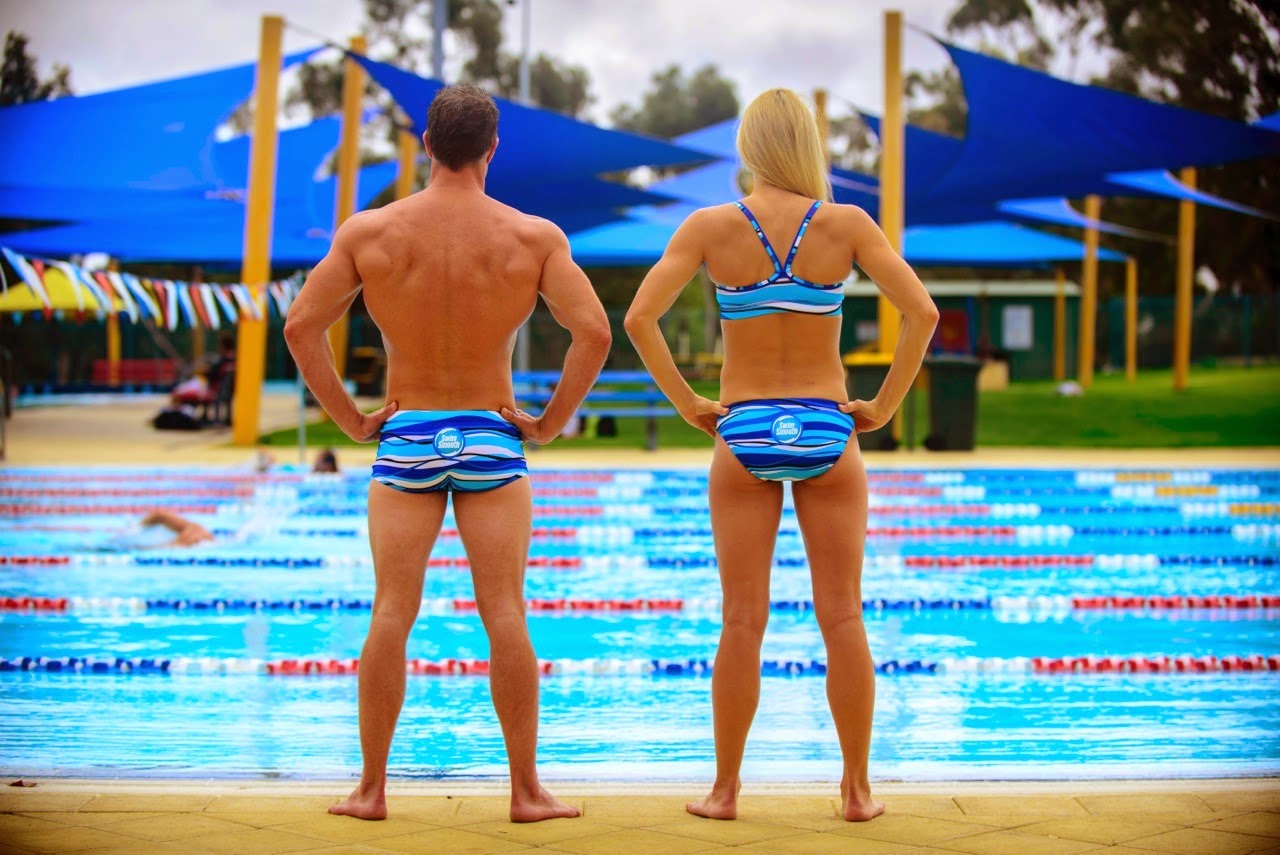| Upcoming Swim Smooth Clinics / Camps: Acton Video AnalysisFull information here Richmond/Wimbledon Workshops Full information here Richmond SS Squad Full information here Mallorca SS Camps 2014 Full information: here Loughborough SS Clinics Full information: here Swim/Tri Camps Alicante All year round Full information: here Salisbury 1to1 Analysis Full information here Ringwood/Totton Squads Full information here Twickenham Video Analysis Full information here Lancaster SS Squad Full information here Lancaster UK, Video Analysis Consultations Full information here Loughborough SS Squad Full information here [ For more info on SS Certified Coaches see here |
[ Paul was interviewed by Sports Coach Radio this week. Listen to the podcast here: sportscoachradio.com/swimming-coach-paul-newsome-freestyle-mastery-pool-open-water/ ]
In the last of our mini-series on training, Head Coach Paul Newsome gives us his take on training appropriately and progressively to become a faster swimmer - aka 'Chasing Speed':
One of the great things about using the Finis Tempo Trainer Pro as a training tool is that it is programmable in increments of 1/100th of a second, allowing very precise time targets to be set during your fitness training sessions. Once you have ascertained your baseline CSS pace (approximately the speed you would maintain for 1500m continuously) you can go about systematically chipping away at your times each week. This is a very motivating approach, ensuring you are always moving forwards and never stuck on a plateau.
This method of training is especially powerful because it allows you to maintain your stroke technique as you go along. The pace is carefully controlled and progression is very gradual, so whilst you're working hard you can still maintain control of your stroke technique - not thrashing or fighting the water.
This is precisely how Mega Megan has improved so much (see posts here and here) - each week training just a little bit faster than the week before, gradually accumulating over many months. These increments are barely noticeable as you go along, as your times decrease by 0.3 to 1 second per 100m per week.
Over the last two years Megan has shaved off 40 seconds per 100m (!) using this gradual progression, even though she never set herself that huge target to begin with - like most of us she just wanted to be a better swimmer. This is "Aggregation Of Marginal Gains" in action (a method famously described by British Cycling and Team Sky Manager Sir Dave Brailsford).
Move Your Foundations Closer To Your Ceiling
Your current CSS pace is a simple but fundamental reference point to your swim fitness, if you increase your CSS pace through your training then you can be assured that for any distance you race over 400m, you will be quicker. What you're doing is moving your threshold speed (which is very trainable) closer towards your maximum speed (something much harder to train). In elite distance swimmers these two points are very close together - you might only be able to sustain CSS for 1000 or 1500m but elite open water swimmers will be very close to this level of effort over 5 or even 10km!
In fact two time Australian 10km Champion Rhys Mainstone from Perth can swim 1:05 /100m for 10km continuously including (very quick) drink stops. Incredible! Rhys has worked hard to push his CSS pace as high as possible but it all started from knowing this point and then training at that pace to gradually and progressively push it upwards: "Slowly Chasing Speed"
Know Thyself
Five weeks ago on the blog we discussed getting your swimming mojo back by finding your CSS pace and then gradually moving forwards from that point, whatever it is. I recently started my own personal training comeback after spinal surgery in December. Since 14th April I've been swimming 5 times per week, completing 36 sessions so far.
On that very first session I bit the bullet and timed myself over 400m to see how much I'd lost and ensure that I was starting my program at the right intensity. The result was a lifetime worst 5:40. Being the competitive guy I am I was shocked as I've never swum slower than 5:00 in my whole life! My CSS pace was 1:28 /100m (a full 18 seconds per 100m slower than when I won the Manhattan Island Marathon Swim 10 months earlier). This is the point I started training at and moved forwards from there, telling myself "it's only a benchmark" and "it is what it is".
In years gone by my head and body would have battled each other at the start of a program - my head telling me "You're still as good as you used to be!" but my body screaming "No you're not! You can't be - you haven't done the work yet!". And that's exactly the point of the article, you have to do the work - there is no magic pill or easy way. Thankfully though, there is a right way to do the work.
Getting Started
I am sure many of you more experienced swimmers will have felt the same at some point. You have good intentions and want to get back into the flow of your training but for that initial 2-3 week period it feels so difficult to gain traction. Training feels hard. You beat yourself up for the time you have had off and your times are very disappointing.
There's a tendency to over-estimate your ability at this time and push too hard too soon - blowing up during sessions and struggling to finish as planned. But what if you set your target pace a little lower, at your true current ability level? Swallowing your pride, perform a CSS test and then setting your Tempo Trainer Pro at your current fitness level is a much quicker approach to getting your fitness back, even if it means dropping down a lane in your squad. Suck it up, accept where you're at, get the sessions done and you'll soon be back to where you want to be, proud of what you've pushed through.
In our Perth squads we have four talented Ironman and 70.3 athletes working hard to prepare for some major international events, including the Hawaii Ironman World Championship in October. Jono, the two Marks and Andy have all suffered a few false start in the last couple of months but by slowing them down and getting them to complete some endurance sessions at their current level of fitness - not where they think they should be - they have started to push through and their confidence is now blossoming.
By not starting too fast, blowing up and pulling the pin on the session, they've become much better at understanding the benefits of pacing too, a skill which is entirely learnable if you have the patience for it.
1 Second Per 100m Faster Each Week
My key session over the last 8 weeks has been a 10x 400m "Red Mist" set which looks like this:
4 x 400m at CSS +6s /100m
3 x 400m at CSS +5s /100m
2 x 400m at CSS +4s /100m
1 x 400m at CSS +3s /100m
Between each 400m take a quick 20 seconds rest - just enough time to take on a little fluid.
(If you're attempting this set for the first time you can reduce it to 10x 300m or even 10x 200m for very new swimmers).
It's not rocket science but this is precisely what I have done over the last 8 weeks at 5:30am on Monday morning without fail. Reducing the beeper by 0.25 seconds per 25m (1 second per 100m) per week - gradually (and precisely!) chasing speed.
Being slower than threshold pace makes for a very aerobic endurance set regardless of your ability - as long as your CSS pace is accurate. In the first four intervals you'll feel like you're being held back, settling into a rhythm in the next three intervals, suddenly feeling some effort in the penultimate set and having to really push on in the final interval.
It's not the most interesting session by any stretch but it's a really good chance to find your rhythm, build some endurance and most importantly measure your progression objectively as the weeks go by. You're also testing your ability to concentrate on maintaining great form and technique in a challenging session where you're not quite sure if you're going to achieve the target on all ten intervals.
It's much harder and much more representative of real world racing (maintaining your technique under pressure) than endless sessions of single-length technique work, hoping for the speed to one day magically come to you.
Each week I simply made each interval 1s /100m faster with the caveat that to do that I have to have completed all ten intervals on the target times on the previous week. I started at 1:28 descending down to 1:25 /100m and progressed really well for the first six weeks as planned. On week seven (1:22 descending to 1:19 /100m) I just missed my times by a few seconds on the last two 400s so repeated the same goal times again this week - made them comfortably - and will forge on again next week.
Of course it feels disappointing when that happens but the reality is after a while progress has to slow slightly otherwise we'll all be qualifying for Rio 2016! When that happens you'll have to make your margin of improvement smaller each week but that is where the precision of the Tempo Trainer Pro comes into full effect - we can reduce things by as little as 0.04 seconds/100m per week if we wish!
I hope you find these 'real world' example of Chasing Speed in action useful. This is how Megan did it, how the entire SS Perth Squad is doing it and how I'm doing it too. So why not give it a try yourself too?
Cheers, Paul
PS. Now I'm back below 1:15 /100m CSS pace I shaved off my beard as a reward! :
In the last of our mini-series on training, Head Coach Paul Newsome gives us his take on training appropriately and progressively to become a faster swimmer - aka 'Chasing Speed':
One of the great things about using the Finis Tempo Trainer Pro as a training tool is that it is programmable in increments of 1/100th of a second, allowing very precise time targets to be set during your fitness training sessions. Once you have ascertained your baseline CSS pace (approximately the speed you would maintain for 1500m continuously) you can go about systematically chipping away at your times each week. This is a very motivating approach, ensuring you are always moving forwards and never stuck on a plateau.
This method of training is especially powerful because it allows you to maintain your stroke technique as you go along. The pace is carefully controlled and progression is very gradual, so whilst you're working hard you can still maintain control of your stroke technique - not thrashing or fighting the water.
Over the last two years Megan has shaved off 40 seconds per 100m (!) using this gradual progression, even though she never set herself that huge target to begin with - like most of us she just wanted to be a better swimmer. This is "Aggregation Of Marginal Gains" in action (a method famously described by British Cycling and Team Sky Manager Sir Dave Brailsford).
Move Your Foundations Closer To Your Ceiling
Your current CSS pace is a simple but fundamental reference point to your swim fitness, if you increase your CSS pace through your training then you can be assured that for any distance you race over 400m, you will be quicker. What you're doing is moving your threshold speed (which is very trainable) closer towards your maximum speed (something much harder to train). In elite distance swimmers these two points are very close together - you might only be able to sustain CSS for 1000 or 1500m but elite open water swimmers will be very close to this level of effort over 5 or even 10km!
 |
| Rhys Mainstone motoring during Swim Smooth Video Analysis |
In fact two time Australian 10km Champion Rhys Mainstone from Perth can swim 1:05 /100m for 10km continuously including (very quick) drink stops. Incredible! Rhys has worked hard to push his CSS pace as high as possible but it all started from knowing this point and then training at that pace to gradually and progressively push it upwards: "Slowly Chasing Speed"
Know Thyself
Five weeks ago on the blog we discussed getting your swimming mojo back by finding your CSS pace and then gradually moving forwards from that point, whatever it is. I recently started my own personal training comeback after spinal surgery in December. Since 14th April I've been swimming 5 times per week, completing 36 sessions so far.
On that very first session I bit the bullet and timed myself over 400m to see how much I'd lost and ensure that I was starting my program at the right intensity. The result was a lifetime worst 5:40. Being the competitive guy I am I was shocked as I've never swum slower than 5:00 in my whole life! My CSS pace was 1:28 /100m (a full 18 seconds per 100m slower than when I won the Manhattan Island Marathon Swim 10 months earlier). This is the point I started training at and moved forwards from there, telling myself "it's only a benchmark" and "it is what it is".
 |
| Get your training progression right and you'll feel this good! |
In years gone by my head and body would have battled each other at the start of a program - my head telling me "You're still as good as you used to be!" but my body screaming "No you're not! You can't be - you haven't done the work yet!". And that's exactly the point of the article, you have to do the work - there is no magic pill or easy way. Thankfully though, there is a right way to do the work.
Getting Started
I am sure many of you more experienced swimmers will have felt the same at some point. You have good intentions and want to get back into the flow of your training but for that initial 2-3 week period it feels so difficult to gain traction. Training feels hard. You beat yourself up for the time you have had off and your times are very disappointing.
There's a tendency to over-estimate your ability at this time and push too hard too soon - blowing up during sessions and struggling to finish as planned. But what if you set your target pace a little lower, at your true current ability level? Swallowing your pride, perform a CSS test and then setting your Tempo Trainer Pro at your current fitness level is a much quicker approach to getting your fitness back, even if it means dropping down a lane in your squad. Suck it up, accept where you're at, get the sessions done and you'll soon be back to where you want to be, proud of what you've pushed through.
In our Perth squads we have four talented Ironman and 70.3 athletes working hard to prepare for some major international events, including the Hawaii Ironman World Championship in October. Jono, the two Marks and Andy have all suffered a few false start in the last couple of months but by slowing them down and getting them to complete some endurance sessions at their current level of fitness - not where they think they should be - they have started to push through and their confidence is now blossoming.
By not starting too fast, blowing up and pulling the pin on the session, they've become much better at understanding the benefits of pacing too, a skill which is entirely learnable if you have the patience for it.
1 Second Per 100m Faster Each Week
 |
| The 10x 400m Red Mist Set on the squad board |
My key session over the last 8 weeks has been a 10x 400m "Red Mist" set which looks like this:
4 x 400m at CSS +6s /100m
3 x 400m at CSS +5s /100m
2 x 400m at CSS +4s /100m
1 x 400m at CSS +3s /100m
Between each 400m take a quick 20 seconds rest - just enough time to take on a little fluid.
(If you're attempting this set for the first time you can reduce it to 10x 300m or even 10x 200m for very new swimmers).
It's not rocket science but this is precisely what I have done over the last 8 weeks at 5:30am on Monday morning without fail. Reducing the beeper by 0.25 seconds per 25m (1 second per 100m) per week - gradually (and precisely!) chasing speed.
Being slower than threshold pace makes for a very aerobic endurance set regardless of your ability - as long as your CSS pace is accurate. In the first four intervals you'll feel like you're being held back, settling into a rhythm in the next three intervals, suddenly feeling some effort in the penultimate set and having to really push on in the final interval.
It's not the most interesting session by any stretch but it's a really good chance to find your rhythm, build some endurance and most importantly measure your progression objectively as the weeks go by. You're also testing your ability to concentrate on maintaining great form and technique in a challenging session where you're not quite sure if you're going to achieve the target on all ten intervals.
It's much harder and much more representative of real world racing (maintaining your technique under pressure) than endless sessions of single-length technique work, hoping for the speed to one day magically come to you.
Each week I simply made each interval 1s /100m faster with the caveat that to do that I have to have completed all ten intervals on the target times on the previous week. I started at 1:28 descending down to 1:25 /100m and progressed really well for the first six weeks as planned. On week seven (1:22 descending to 1:19 /100m) I just missed my times by a few seconds on the last two 400s so repeated the same goal times again this week - made them comfortably - and will forge on again next week.
Of course it feels disappointing when that happens but the reality is after a while progress has to slow slightly otherwise we'll all be qualifying for Rio 2016! When that happens you'll have to make your margin of improvement smaller each week but that is where the precision of the Tempo Trainer Pro comes into full effect - we can reduce things by as little as 0.04 seconds/100m per week if we wish!
I hope you find these 'real world' example of Chasing Speed in action useful. This is how Megan did it, how the entire SS Perth Squad is doing it and how I'm doing it too. So why not give it a try yourself too?
Cheers, Paul
PS. Now I'm back below 1:15 /100m CSS pace I shaved off my beard as a reward! :










































